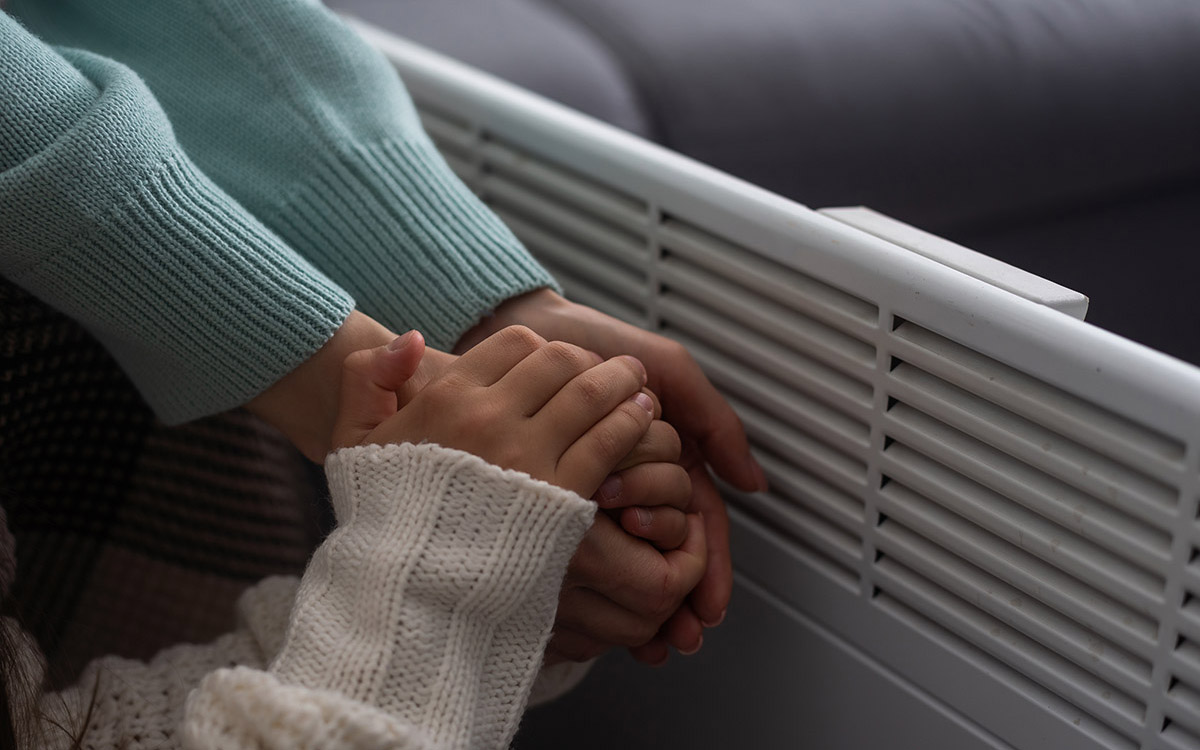Study traces history of legislation to help low-income households pay for energy

LAWRENCE — As extreme winter cold and rising summer temperatures drive energy bills higher, low-income households face utility shutoff for not being able to afford the cost. Policy addressing such energy insecurity has traditionally been viewed as the domain of poverty law, but new research from the University of Kansas proposes it should be a more central part of energy law. The work traces the history of legislation to assist in covering home energy bills and outlines how energy and poverty law could work together to ensure better energy insecurity policy.
The Low Income Home Energy Assistance Program, known as LIHEAP, was established by Congress. The legislation recently marked its 40th anniversary as the centerpiece of federal low-income energy policy.
“Although it makes sense that help on energy bills is administered through social service programs, it’s always bothered me that energy insecurity and energy burden are usually addressed only abstractly, as part of general affordability, in energy law. I pursued this research to better understand that split,” said Uma Outka, William R. Scott Professor of Law at KU.
Outka has published an article examining the history of LIHEAP and related programs, calling for a greater focus on energy insecurity within energy law and outlining ways it can be addressed. The article was published in the journal Environmental Law.
Outka’s work traces the passage of LIHEAP and its original intentions to help low-income households afford energy bills, especially in times of extreme temperatures, which most often has been winter heating bills, but is increasingly needed for cooling bills during the hottest days of summer. She also details legislation such as the Weatherization Assistance Program, designed to help homes become more energy efficient, and how both have come up short in various ways.
While never intended to fully solve the problem of energy insecurity, LIHEAP has never served all eligible households. In fact, the program has only reached roughly 16% of eligible households over time, ranging from the low single digits to about 30% of eligible households each year, depending on the state. In Kansas, only about one-fifth of eligible households receive help with energy bills through LIHEAP.
Outka examines how some states have taken measures to supplement programs such as LIHEAP, but also how households across the country fall through the cracks every year due to problems applying for such programs, lack of knowledge of the existence of assistance and other barriers.
Further, shifting political winds illustrate the danger of relying on programs that themselves rely on congressional funding. During President Donald Trump’s first term, the White House proposed that LIHEAP funding be eliminated, though Congress rejected that proposal at the time. Trump’s latest budget proposal for 2026 again has LIHEAP on the chopping block.
“This remains a critical issue, as the budget proposal for next year proposes eliminating LIHEAP, and the staff who administer the program have been fired,” Outka said.
Research shows that energy insecurity disproportionately affects Black, Latino and Native households and that low-income households also frequently have high numbers of children, seniors and individuals with disabilities residing in them. Outka cites research that shows the economic effects energy insecurity has on such households, including statistics showing that the most common reason people seek high-interest, short-term payday loans is to afford energy bills.
“We have much more information now than we ever have about what the experience is like when people face energy insecurity, but it still seems as if the specific needs of very low-income households are sidelined within energy law,” Outka said.
Further, Outka distinguishes a difference between energy insecurity and energy poverty. Many areas of the world have people living each day without access to energy, whereas the United States has the capacity to provide energy for every citizen, though many cannot afford to pay for it. Thus, she reviews the issue under the definition of energy insecurity in the United States.
Because the capacity exists, energy law would be well-served to consider energy insecurity more directly and not assume it is a problem that will be solved by poverty law, Outka writes. Those involved in energy law and policy, especially at the state level, could help by making sure the issue is at the forefront, for example, when utilities seek approval to raise utility rates for consumers. And while energy law can’t solve poverty, it can play a bigger part of ensuring just rates for low-income households and centering them in clean energy reforms, she writes.
In future research, Outka hopes to study states that have been the most successful in assisting low-income households address energy insecurity, what steps they have taken and if they can be strengthened or duplicated in other states.
Ultimately, energy and poverty law should work together to address energy insecurity, as relying on annual congressional appropriations in a divisive political climate can be precarious, according to Outka. Through such collaboration, the issue could move beyond crisis response into a rethinking of law that both addresses energy insecurity and centers low-income households in a stronger energy policy.
“To treat low-income energy insecurity as primarily a poverty problem has allowed inequities to continue,” Outka said. “By tracing the intertwined history, we see compelling reasons to reconceive low-income energy policy as energy, not to displace the critical assistance provided by anti-poverty programs, but rather to reinforce it.”